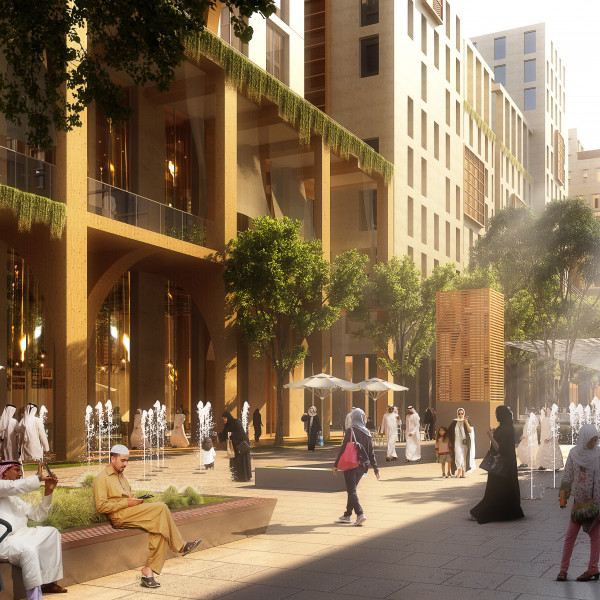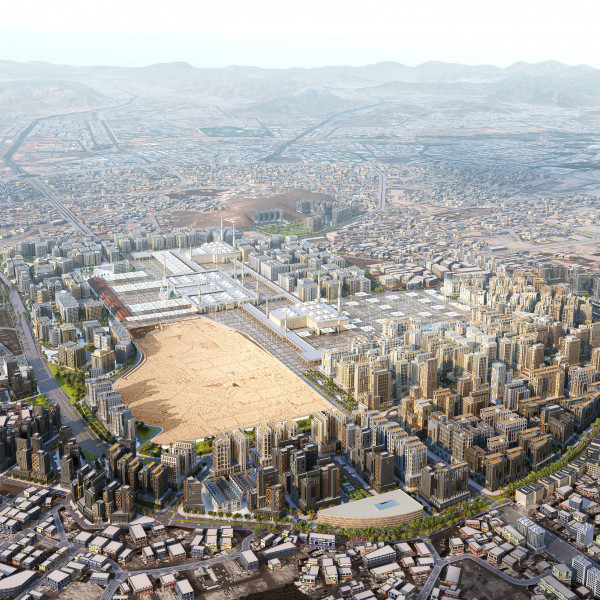What is a smart city?
A smart city is a municipality which uses a range of information and communication technology (ICT) to improve the operational efficiency of public services and the welfare of its residents. It leverages the world of ‘big data’, the Internet of Things (IoT), and a variety of connected devices to optimize its functions, improve the quality of life, and ultimately drive economic growth. In essence, it utilizes the potential value added by Internet-enabled technologies. A sustainable smart city is one which meets the needs of its residents now and in the future, in terms of the environment, economy, and society.
Smart solutions for a happier city
“Our approach to developing wayfinding strategies and design focuses heavily on creating one-of-a-kind technologically advanced solutions to raise and sustain happiness levels of end users.” - Fariz Ahmad
Dubai is a leading light in the world of smart cities. The UAE’s vision for Dubai as a smart city is to make it the happiest city on earth by improving the happiness levels of all staff and residents. In fact, at the heart of their strategic framework is the happiness meter.
At various digital and physical touchpoints within the city’s services, the happiness meter enables customers to relate and rank customer experiences within industry sectors and geographic areas. And this has huge potential for smart wayfinding, where the aim is to provide a pleasant navigation experience for all users, one that is seamless, safe, personalized, memorable, and efficient.

Innovations in wayfinding
“This is what we call the ‘sweet spot’ for wayfinding: the physical navigation journey supported by a smart wayfinding feature in an app… to provide an inclusive, enjoyable, and socially engaging user experience.” - Fariz Ahmad
Technology allows us to take a multidimensional approach to wayfinding, creating meaningful and memorable experiences which make designs functional, unique, and fun – all at the same time.
Advancements in artificial intelligence (AI) and augmented reality (AR) can also serve to enhance the physical navigation journey through smart wayfinding features in an app. This can involve receiving relevant information based on your precise geolocation or holding up a smartphone to overlay digital maps and information over reality.
So, does this mean the end for static signage? Whilst physical, static signage and smart, digital wayfinding can obviously work in isolation, we’ve seen the most effective solutions if using them in parallel to create a seamless coordinated system.
One of the most interesting technological developments for wayfinding is the 'digital twin'. In construction, alongside an actual development, you could have a digital twin – a virtual development which mirrors the physical world – which is fed by real-world data. In terms of wayfinding, this could provide deep insight to assist decision-making and strategy. For example, in a public building, collected data might show footfall throughout the day and identify bottlenecks. The digital twin would enable wayfinding designers to test out potential changes and simulate the effects before implementing them on site.
In Saudi Arabia, an exciting project is underway to find smart solutions to the challenges faced by residents and visitors to Madinah. A team of experts is working together across disciplines to engineer a holistic smart city solution that can be implemented and carried forward in years to come.

The future of wayfinding
“Graphic designers and wayfinding designers have to look at digital in some of their designs and understand how it can be integrated or incorporated because there is always a digital component that we have to consider.” - Fariz Ahmad
These days, when we talk about ‘digital’, it's no longer as simple as a touchscreen that tells you how to get from point A to point B in a shopping mall. Forward-thinking cities are already leveraging connected devices and big data to improve the lives of their residents. It feels inevitable that wearables, like smart glasses, alongside digital signage, will eventually become the norm.
Wayfinding is always going to be an integral part of our everyday life, so it seems highly likely that there will be an ongoing need for static signage in most built environments. However, the information or the content will eventually be replaced by digital wayfinding.
As increasing numbers of clients ask how they can enhance the overall user experience within their built environment, it’s important for wayfinding designers to consider all the technological possibilities of combining static signage and digital wayfinding.
Our podcast is available on Spotify, Apple Podcast and YouTube. Don't forget to subscribe and rate us!



